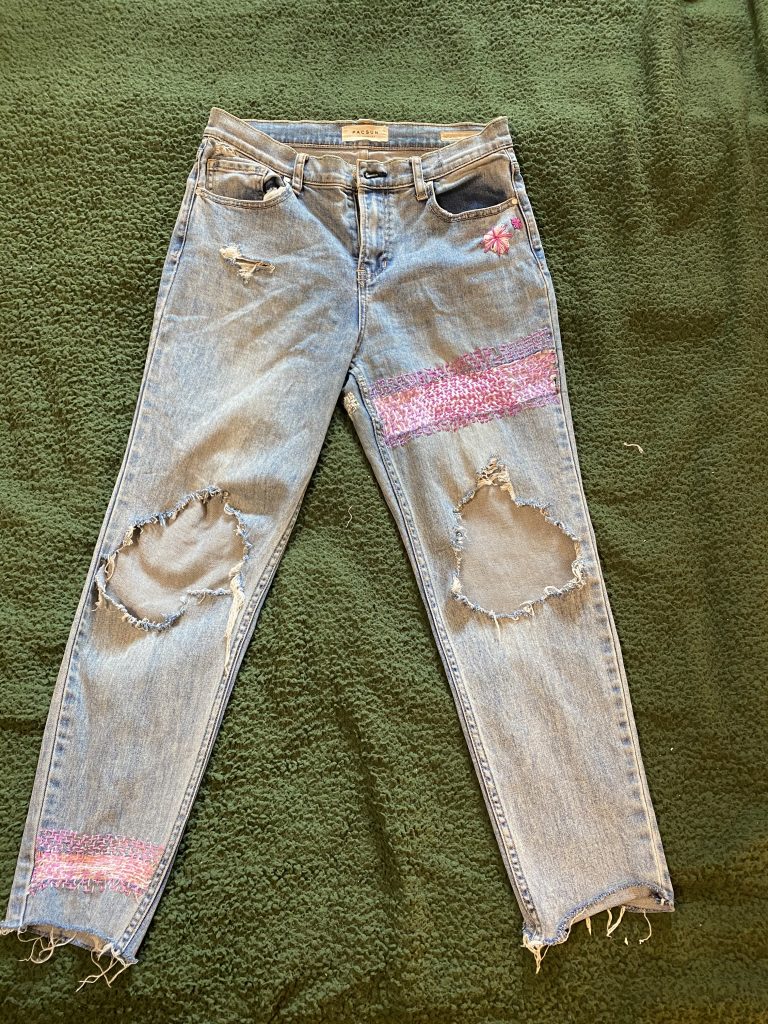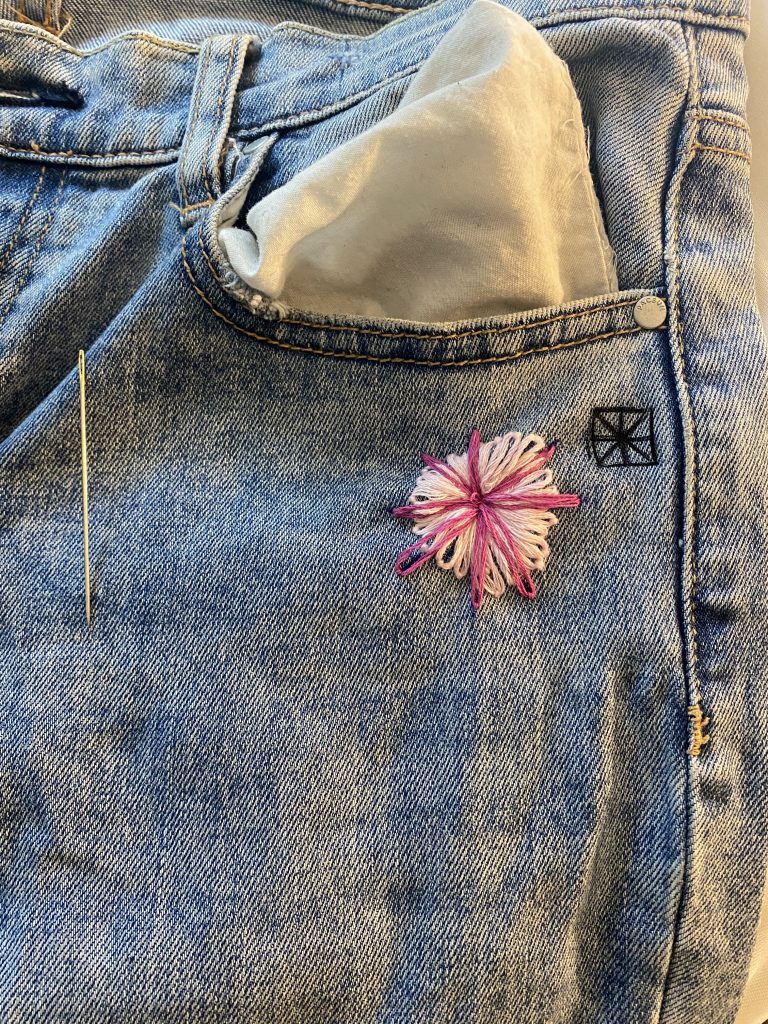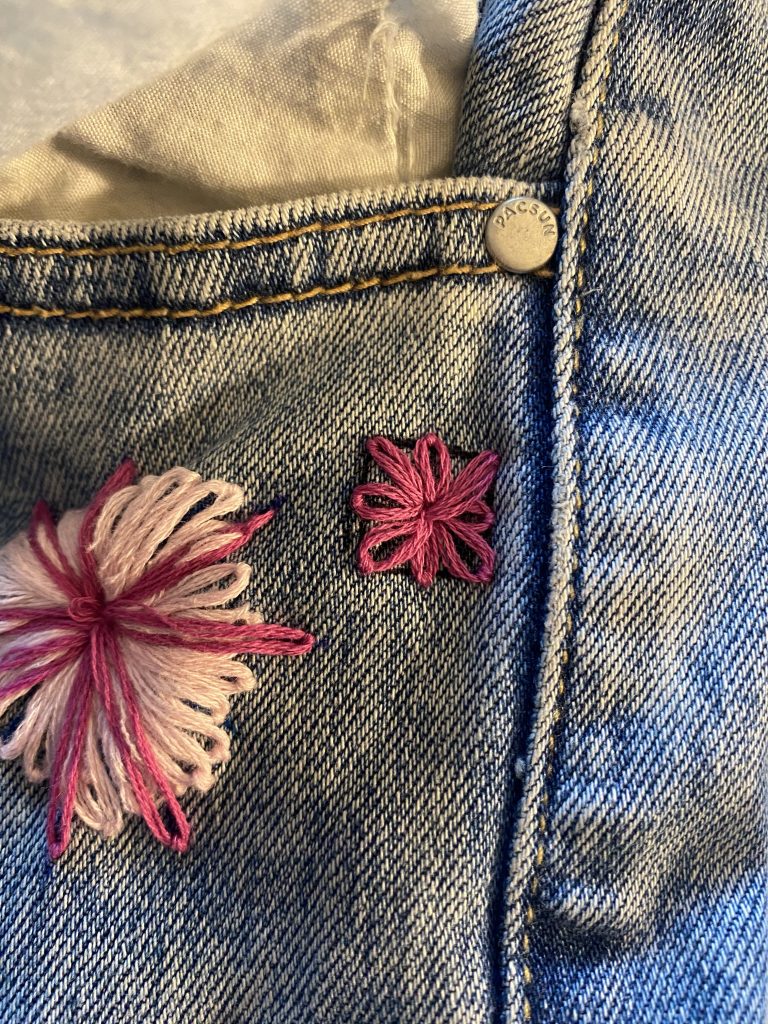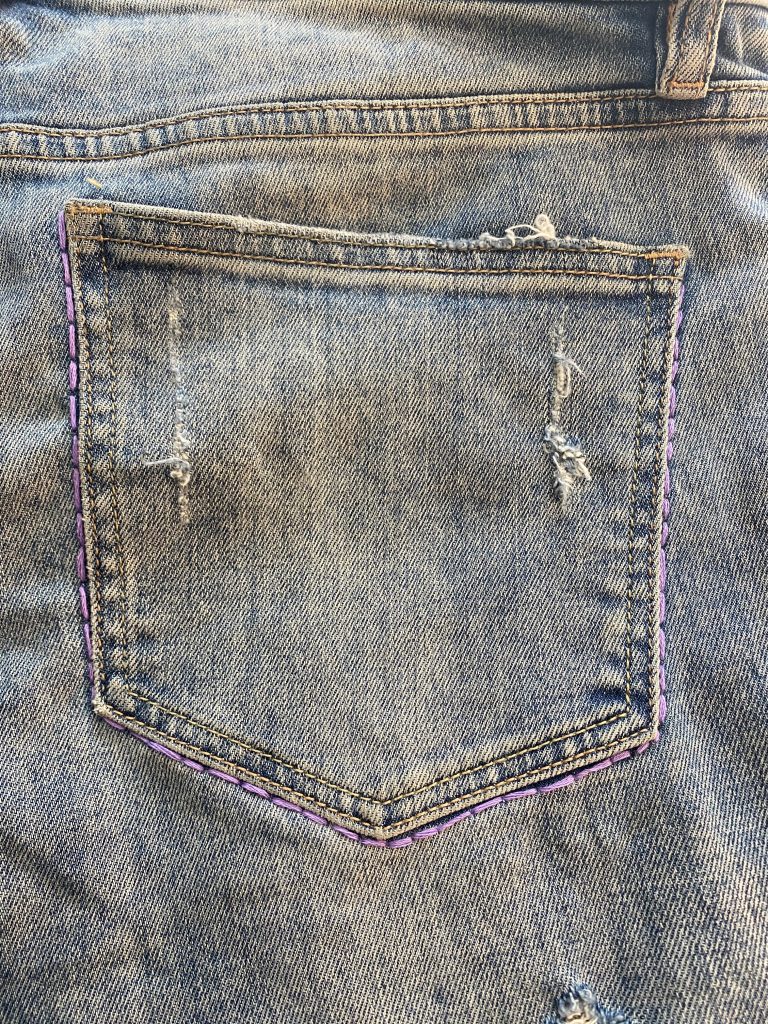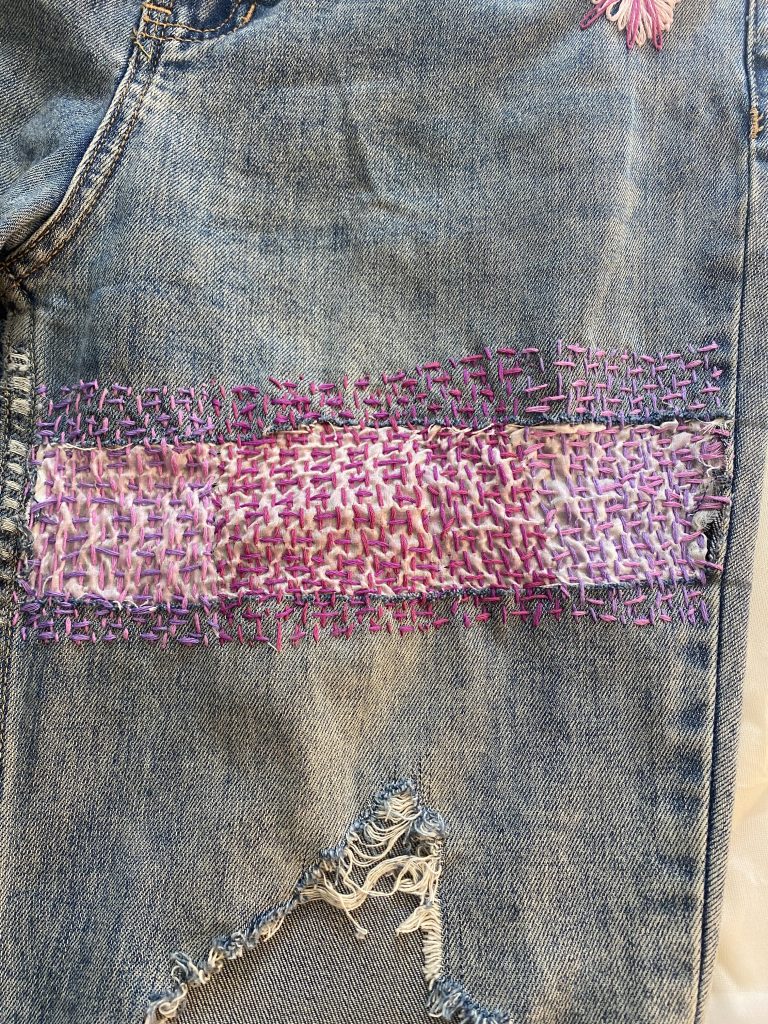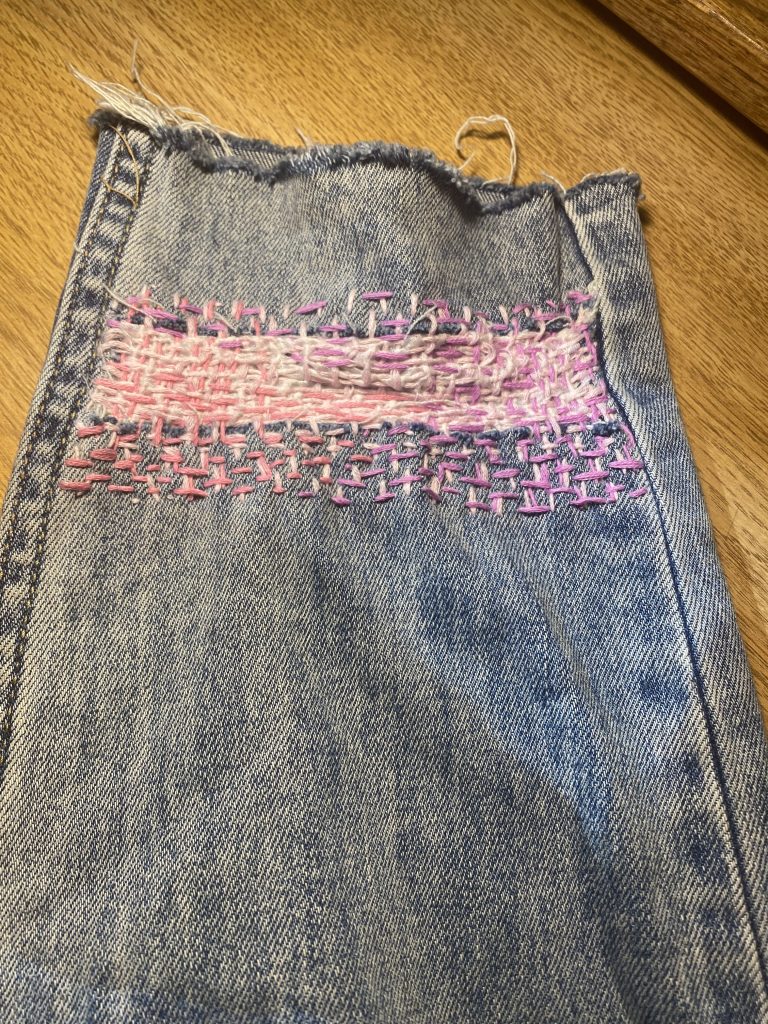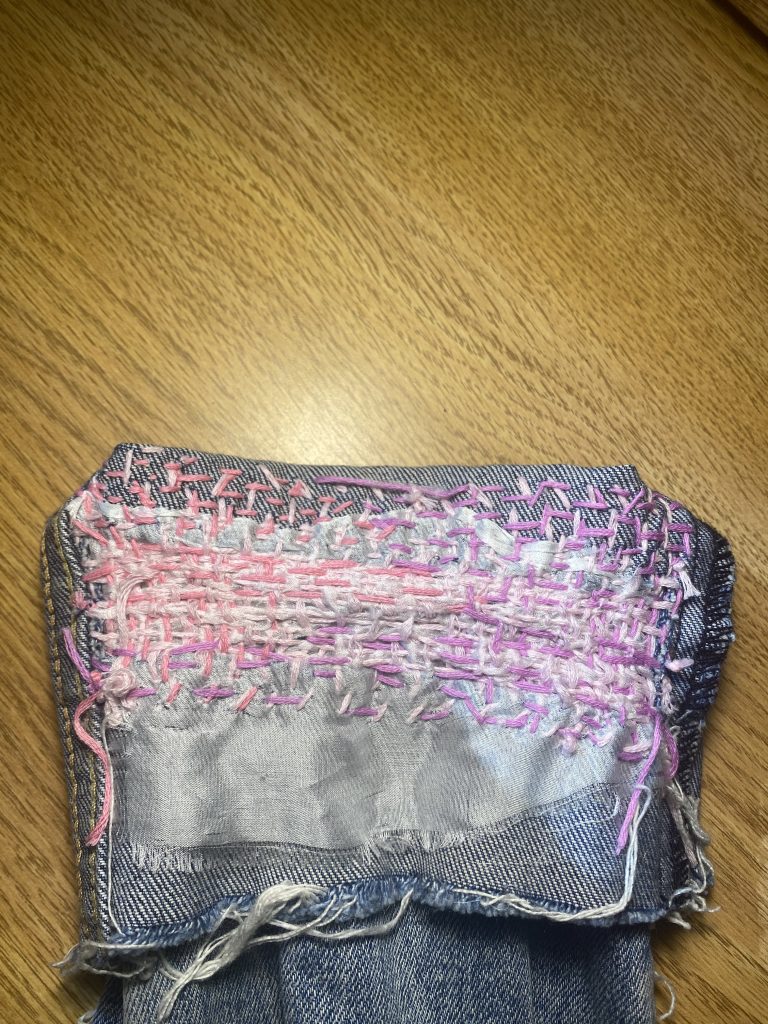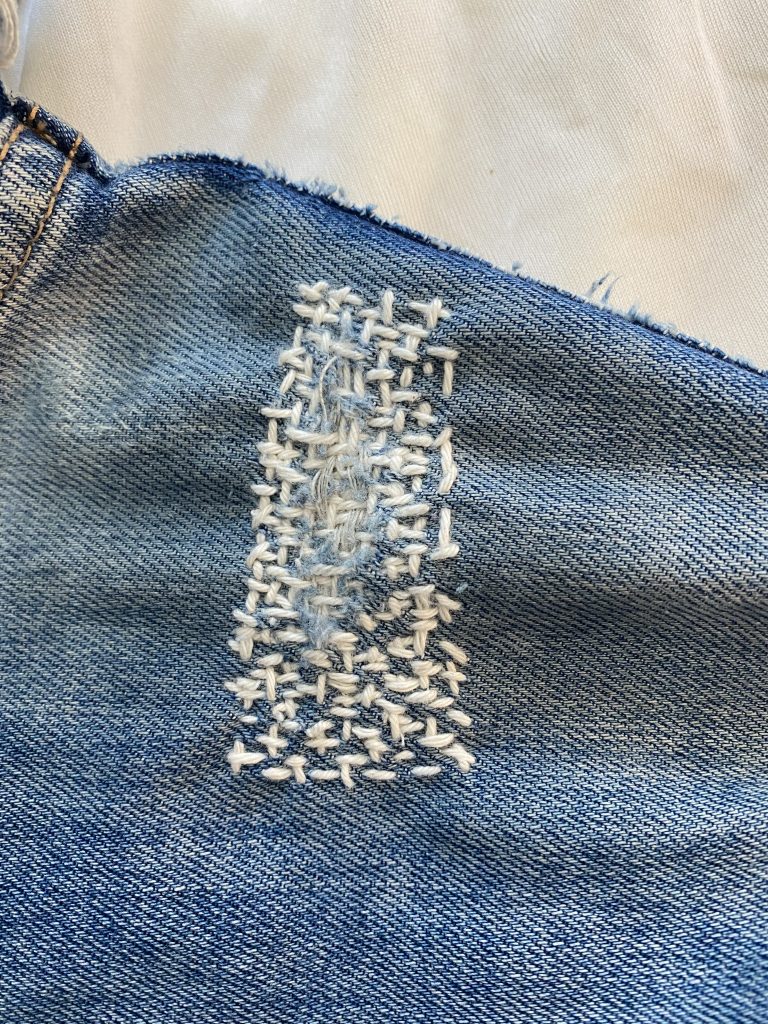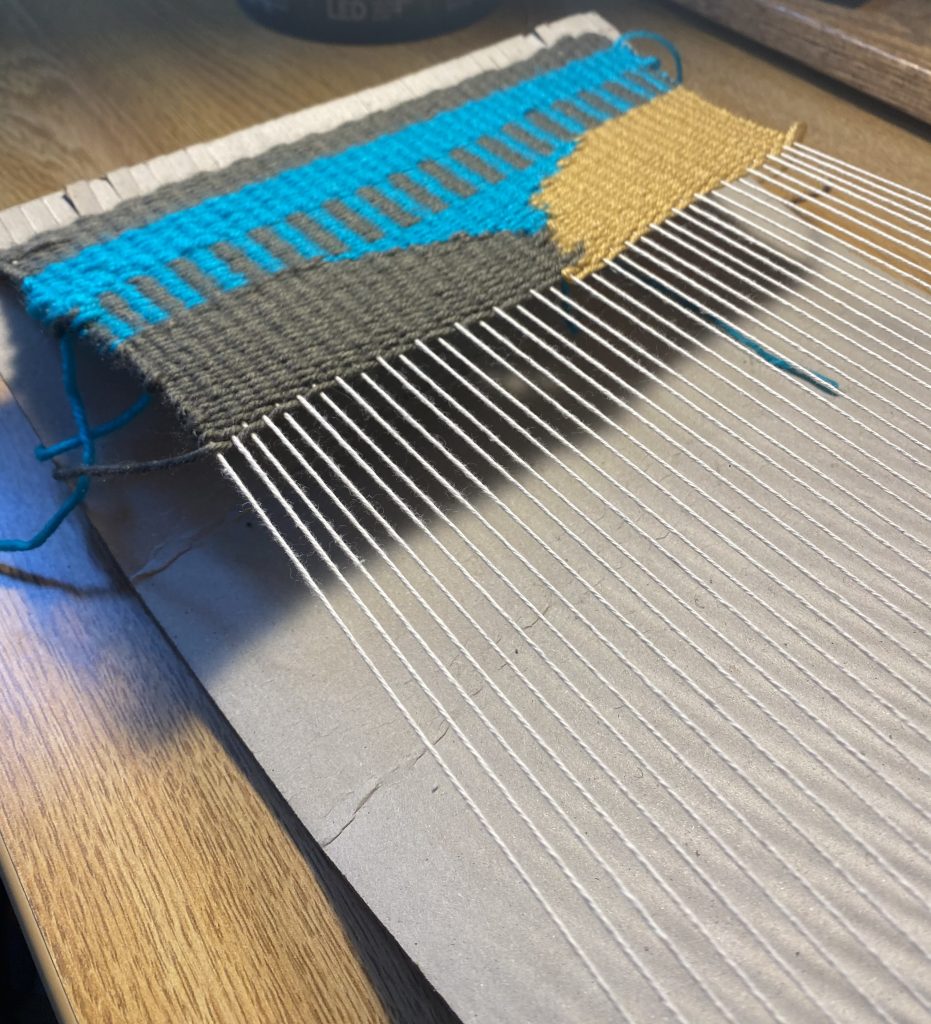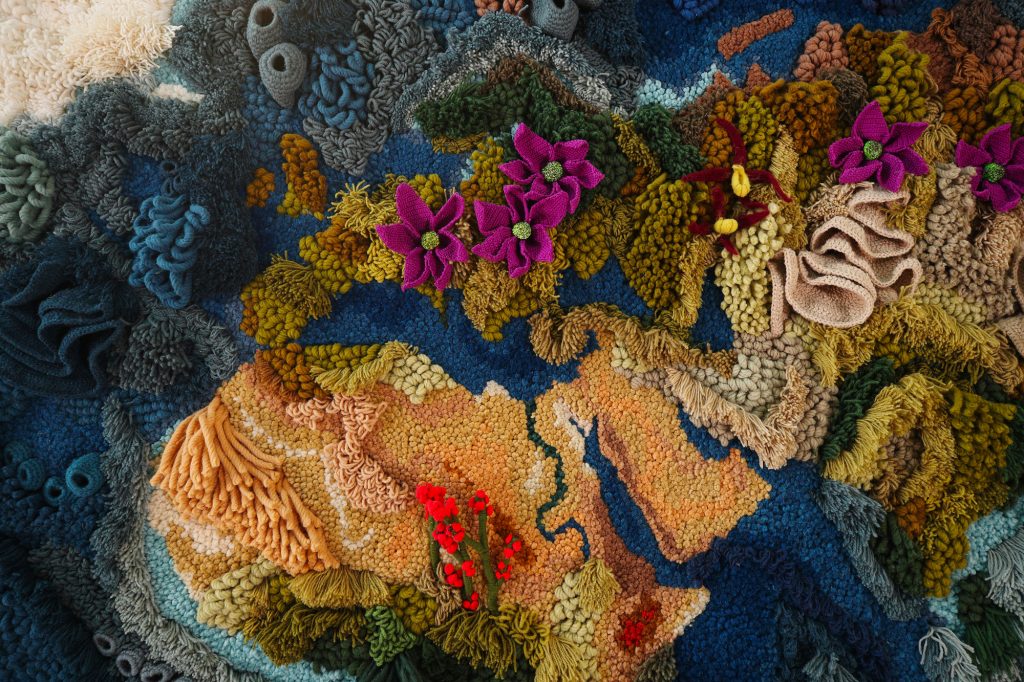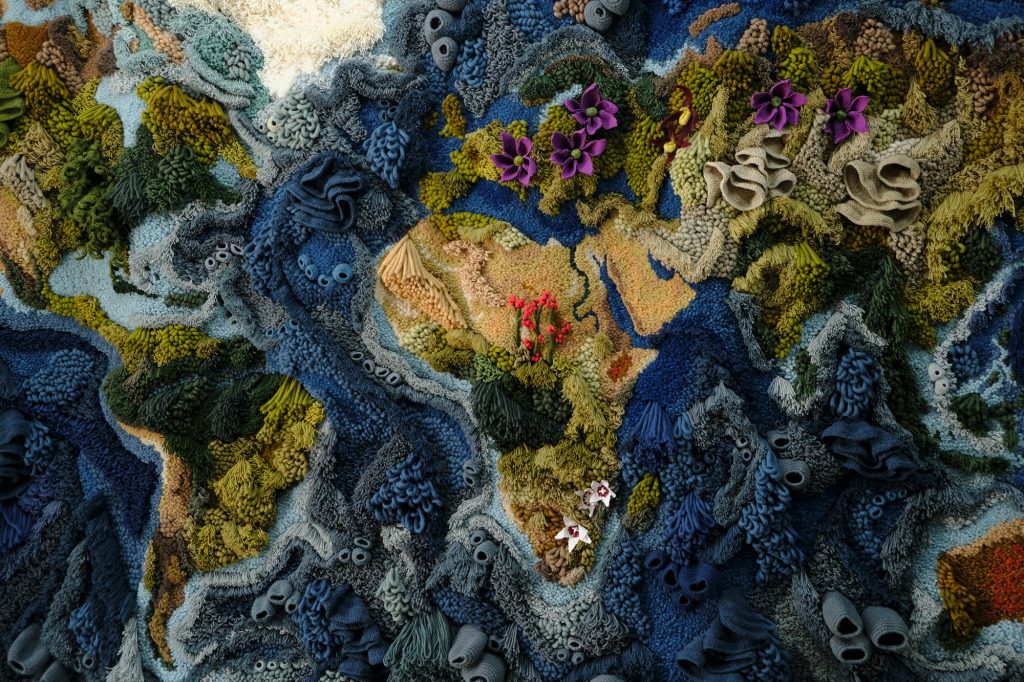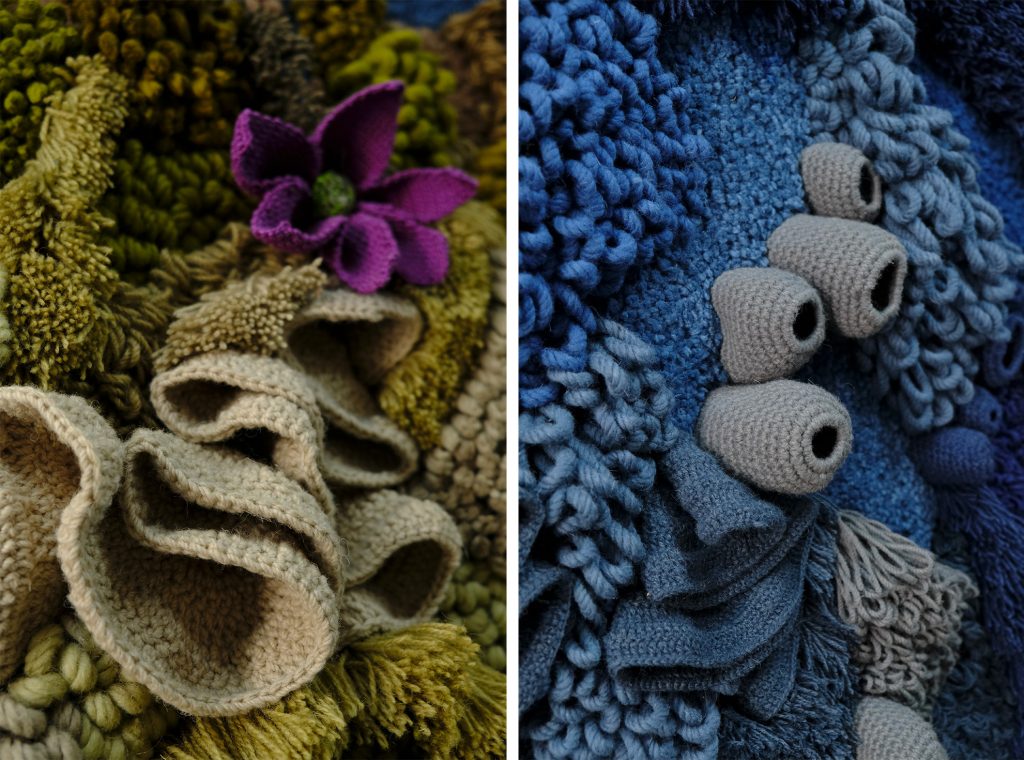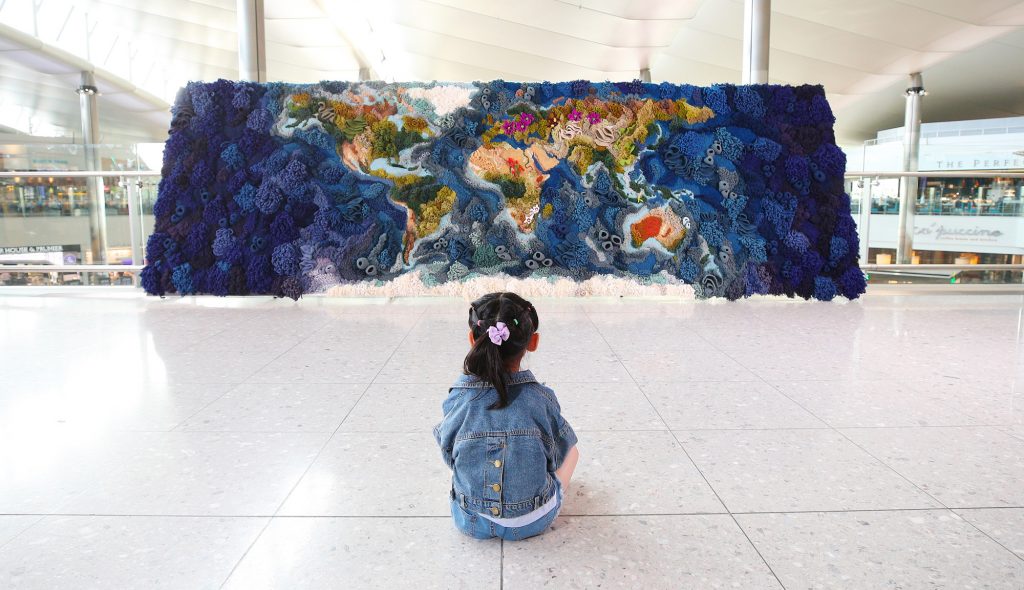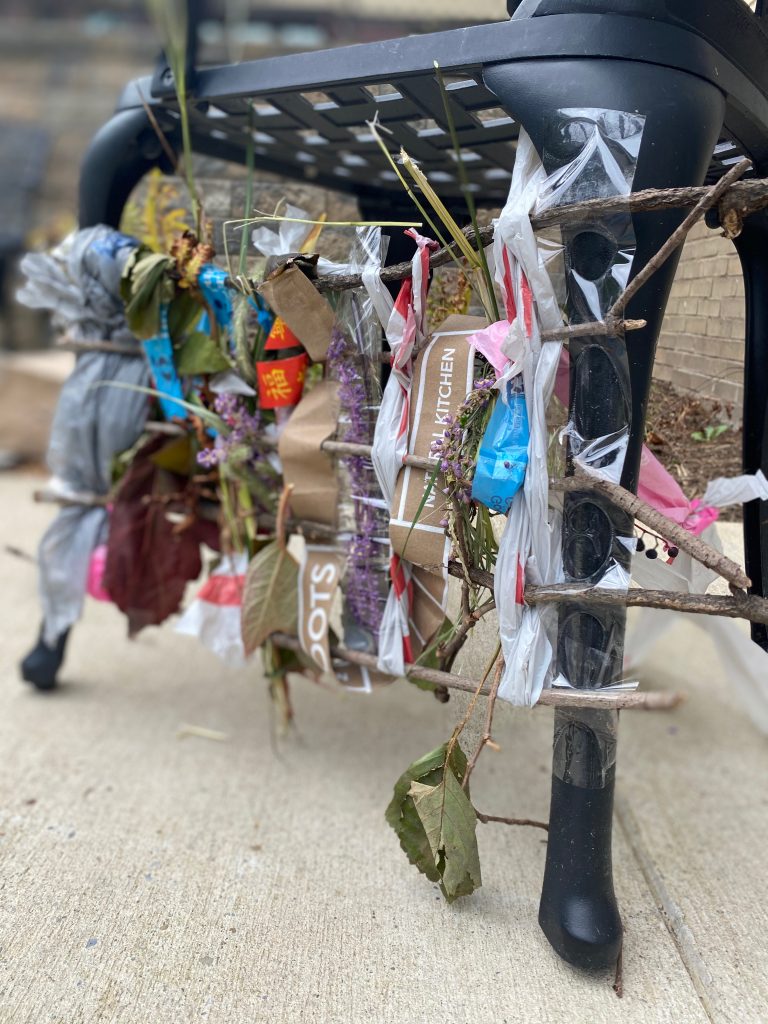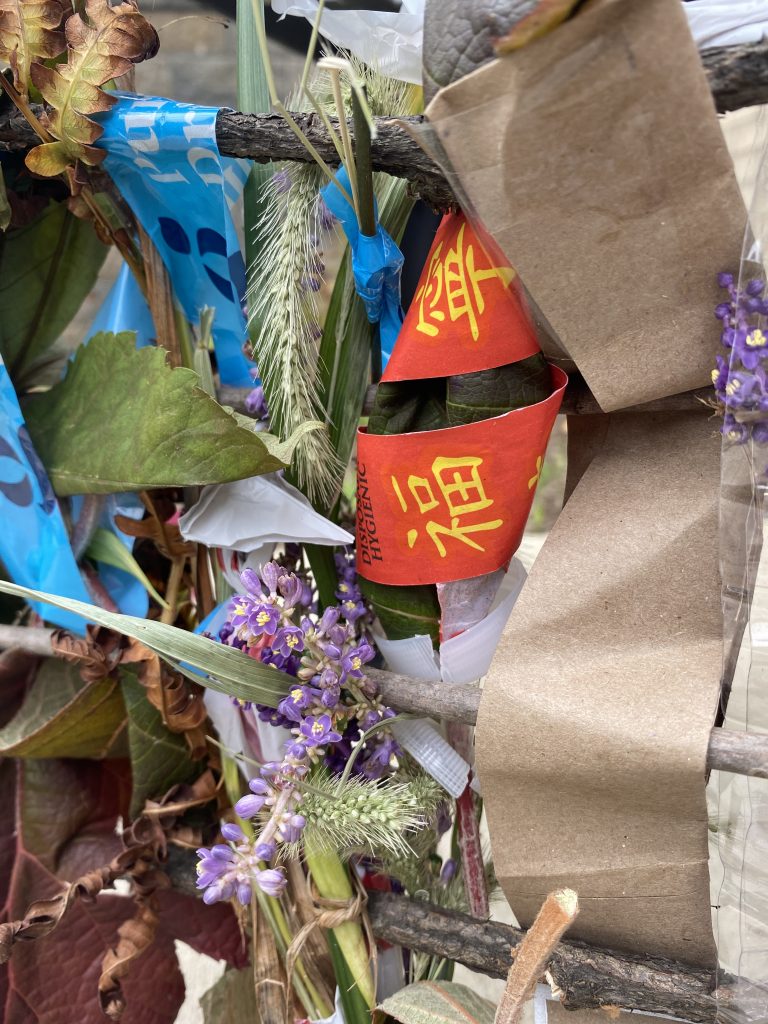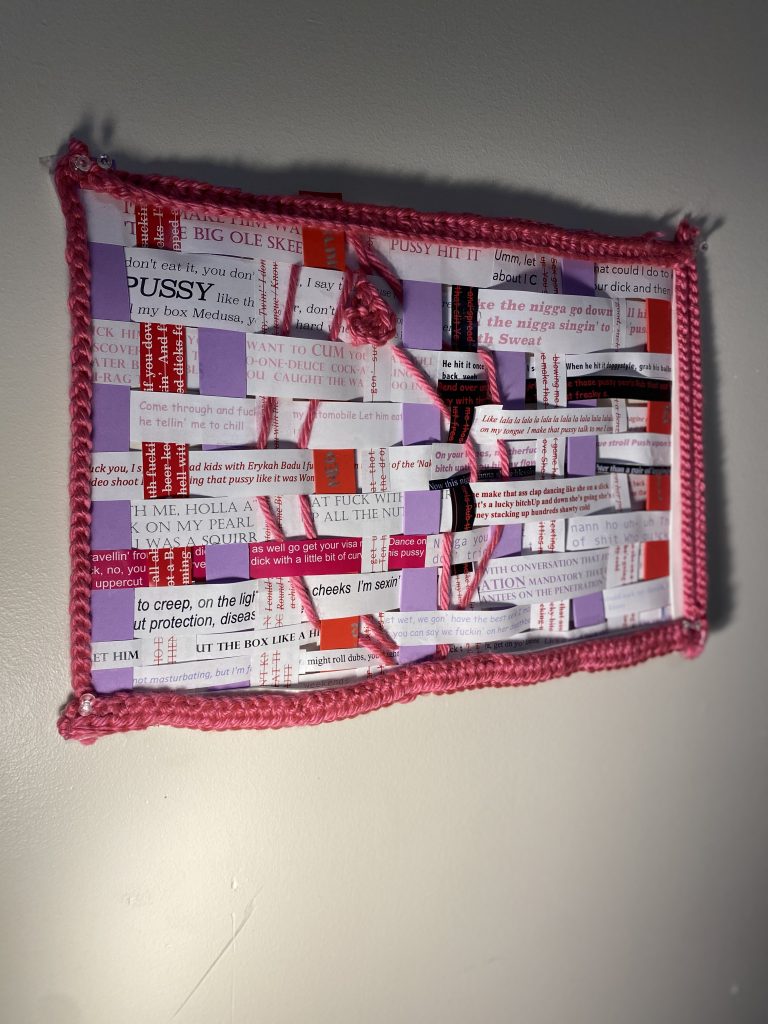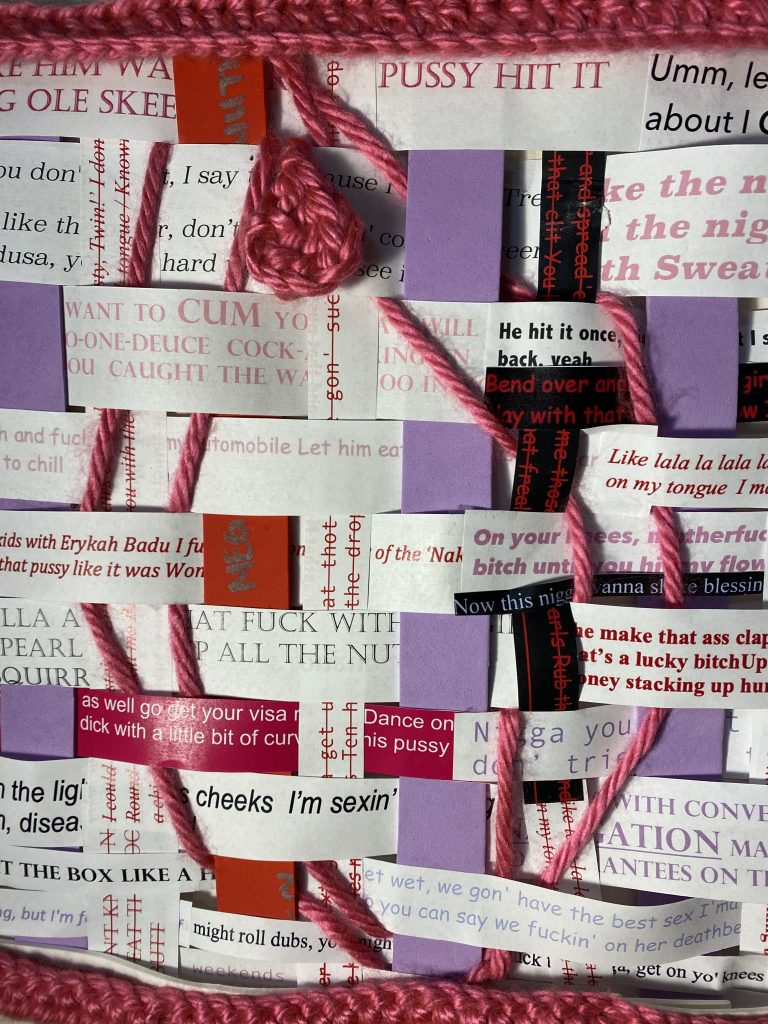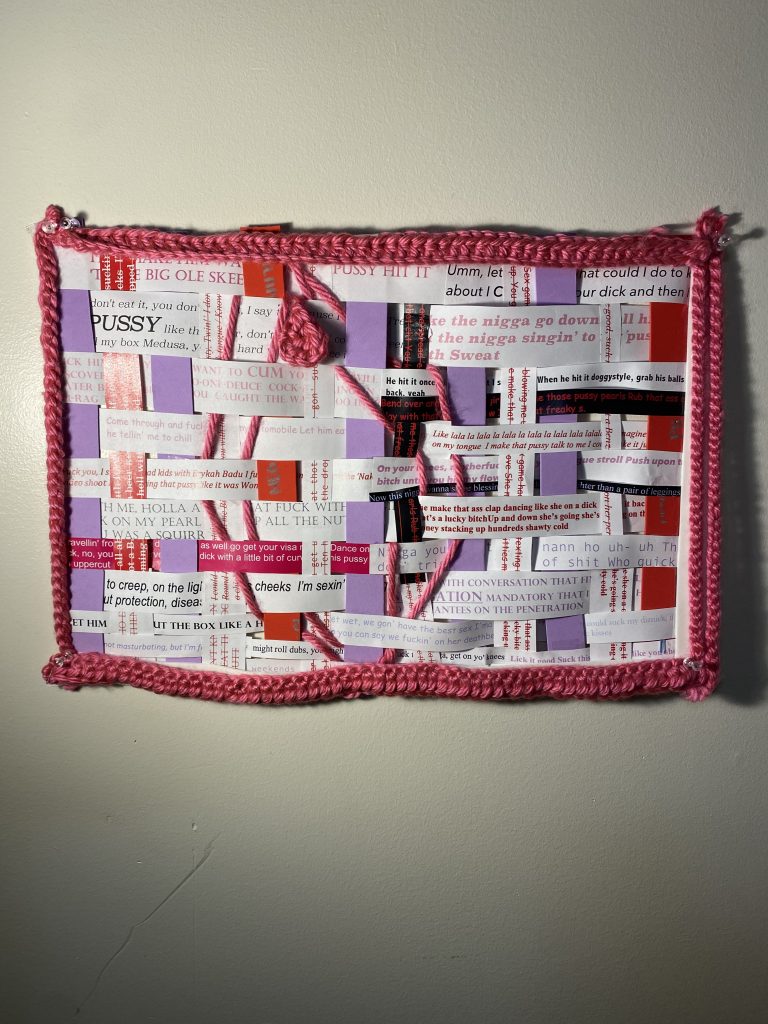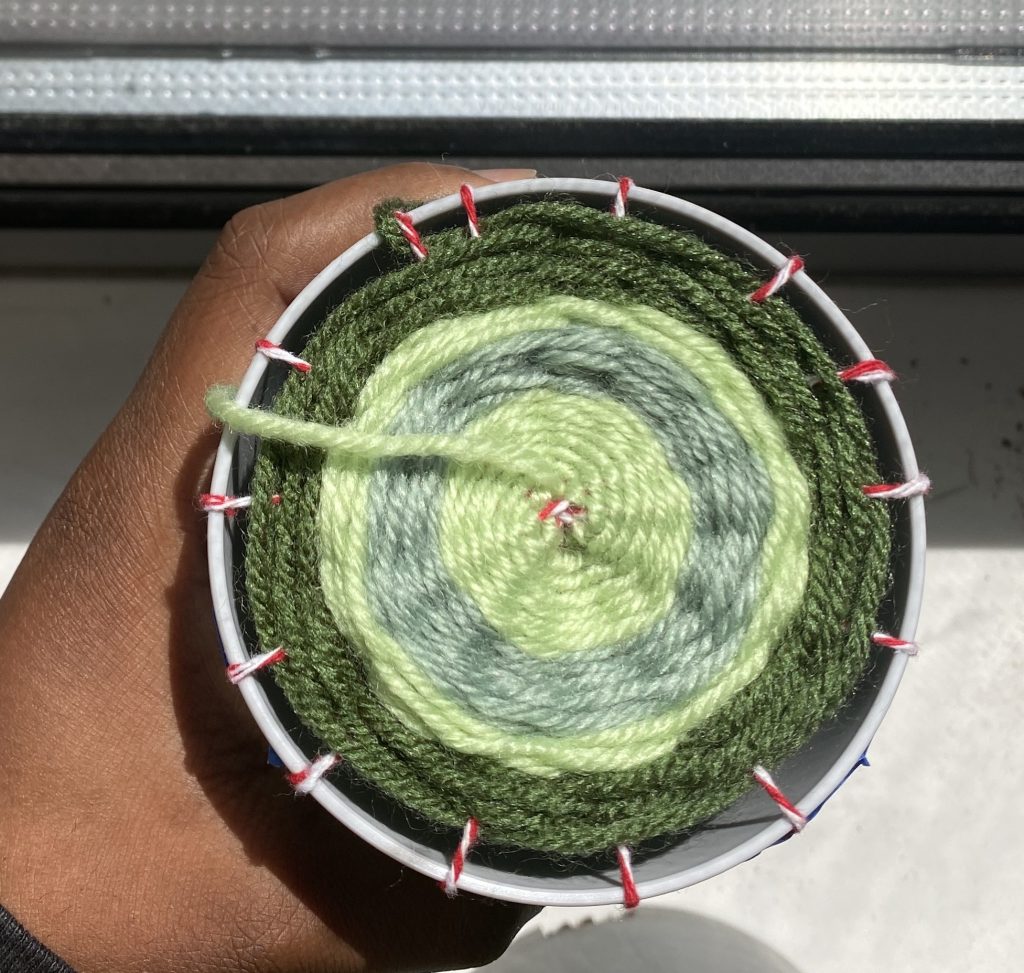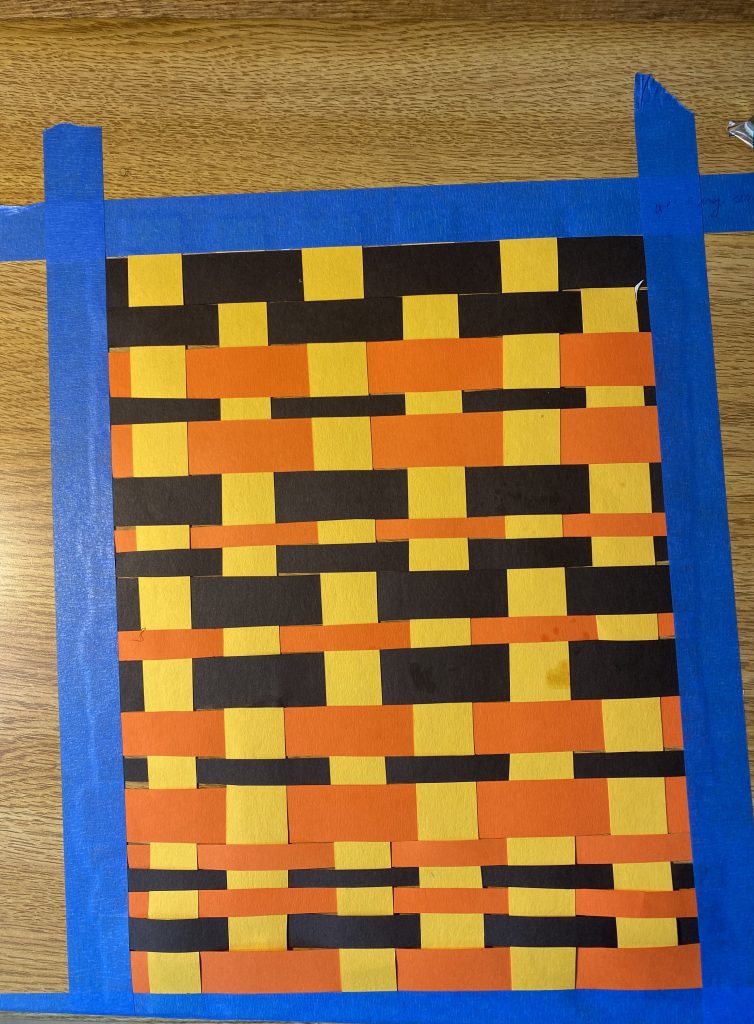The textile tradition I wanted to focus on was Adire of the Yoruba tribe in Nigeria. This textile tradition are cloths that are dyed using indigo and traditionally worn by women as wrappers but also were began to be used as textiles for other garments.

The dying process would usually include indigo from leaves that were locally grown or grains that were imported. The leaves are collected and left to ferment. The dying was done in large pots that are sunken into the ground. The cloth was dipped and then given time to oxidize until it turned blue. If a sheen effect was intended it would be beaten with a mallet.
Adire Oniko is a type of Adire traditional dying that uses raffia as resists. There are specific patterns that have names but those names would range from town to town. Other resists were used to create patterns like Adire Alabere (stitch resists), Adire Eleko (starch resists), and the practice of hand painting which used chicken feathers, palm leaves, and match sticks.

Adire production was most popular in Ibadan. There is even a pattern to celebrate the city called, Ibadun dun (“Ibadun is good”.)
I chose this tradition because I’m Yoruba, so seeing the name got me interested because of connection to the tribe. Then looking at the textiles, I realized that the name and methods to get the intended textile were unfamiliar but the cloth itself was not. I’ve seen Adire cloths in closets at home, old family pictures and at parties/gatherings. I got my information from the Victoria and Albert Museum.




















